Getting lost in the creative process
& (re) building The Rebis with Nick Jacobs, our producer & designer
Dear friends — I’ve been experiencing waves of grief in the aftermath of my father’s sudden death a few weeks ago. I am finding so much solace in The Star, but that’s a story for another day. Thank you so much for your patience and support. We are still working towards publication this fall!
Today, we’re featuring an interview with Nick Jacobs, also known as Page of Cups Tarot, who joined The Rebis this year to update the layout and design of our print anthology. (There’s a fun sneak peek of the new issue below!)
Nick is a tarot reader, mentor, writer, and designer with over 20 years of experience handling and studying the cards. He believes that the tarot creates the space for individuals to reflect on their lives in a meaningful, actionable, and helpful way.
Nick has done a fantastic job of elevating the aesthetics of the publication, creating a visual framework that allows the artwork and writing to shine. In the interview, Nick shares more about his approach to (re)building The Rebis. We also talk about getting lost in the creative process, balancing a tarot business with full-time work, and art-making during times of crisis.
We’ve been doing artist & writer spotlights on Instagram for every contributor to The Star — follow along here. And stay tuned for timing updates on pre-orders!
If you’re excited about what we’re creating, consider buying our print publications, sharing our Substack, and recommending us to friends. With the frustrating decline of social media platforms for discovery, we’re relying more and more on word of mouth for growth. Thank you for your support!
Hi Nick! When did you first start working with tarot?
In all honesty, pop culture was my gateway to the tarot. Growing up, there were only so many films that my siblings and I could all agree on, and the James Bond franchise was one of them. My favorite was Live and Let Die, Roger Moore's first portrayal of 007. In this film, a drug lord trying to smuggle massive amounts of narcotics from the Caribbean to the United States consults a powerful psychic named Solitaire (portrayed by a young Jane Seymour) to help guide his decisions. From her costumes and makeup to her hair and nails, I wanted to Be. This. Woman.
As a closeted kid growing up in the Midwest, I obviously couldn’t express these desires openly. Instead, I focused on the tool Solitaire used to make her predictions: the tarot.
Around that same time, I was spending a lot of time with my paternal grandmother. We would go out to brunch, museums, art fairs, and shopping on the Main Street of her town. There was one particular shop near her home that carried all things new age, spiritual, and mystical, including a massive amount of tarot decks. While perusing the shelves during one of our many visits (right around the same time I had seen Live and Let Die), I laid eyes on that infamous yellow box. Without a second thought, I placed the deck on the sales counter and handed over what seemed like a million dollars to buy my first Rider-Waite-Smith deck. I was about 12 years old.
Has your relationship with the cards evolved since then?
In one word: Immensely.
When I purchased that first deck, I was in "explore mode," reading up on Pagan, Wiccan, and other Earth-based religions that fell outside of the conservative realm of my family’s religion of choice, Catholicism. I attended witchy events and took classes at other local metaphysical shops around my hometown. To me, consulting the tarot was a powerful act, a way to “see a future” that others couldn’t. While other boys in school were adept at sports, video games, or entertaining the opposite sex, tarot was something that I didn’t just have a “knack” for; it was something I was comfortably and shamelessly loving out loud.
From there, my approach to the cards morphed many times over through the years: from a socially lubricating party trick in high school to a way to make extra money in college. Ultimately, I have landed in a more human-based practice, one where the cards don’t necessarily show you anything you don’t already know. To me, the human existence can be summed up in the 78 cards that comprise the tarot, and I couldn’t be happier working with them in a way that connects me to myself and others on a deeper, more human level.
I love that — the reflection of the human experience is so evident throughout the Fool’s journey. Is there any one card that you’re particularly drawn to right now?
Right now, I’ve been revisiting all things Page of Cups. I chose that card as my Significator many years ago, named my tarot reading business after it, and I recently got a tattoo on my forearm to commemorate him.
Essentially, I’m getting reacquainted with my inner child by exploring him, his cup, and all this it holds.
Tarot is definitely a way to engage in inner child work. It’s also such a catalyst for creativity. As a designer, art director, and artist, how do you define creativity?
The word "creativity" can sometimes feel lofty and anxiety-inducing for me. I think this feeling stems from my professional career, where people often look to “creatives” to execute rather than explore—something that I believe is central to the creative process.
Creativity should be a process of exploration, tinkering, and then solidifying (to some extent). The part I enjoy most is the tinkering and iteration. When I have an idea or a thought starter, I’m fortunate enough to see the end product clearly in my mind’s eye. Then the question becomes, “How do I make that real?”
I also love getting lost in the process. There’s nothing more exhilarating than starting the work and then looking up to find that quite a bit of time has elapsed.
Mmmm yes, getting lost in the process can feel so delicious. To that point: What are some of your creative rituals?
I prefer to be creative in the early morning. For some reason, as the sun starts to set, I seem to run out of creative gas and become easily distracted.
Additionally, it’s impossible for me to work when my surroundings aren’t tidy. I always do a sweep before sitting down and getting to work. If I’m organized physically, I’m organized creatively.
You just created a beautiful new deck called The Haptic Tarot. Why this deck, why now?
I have been practicing tarot for over 20 years and have come to know many wonderful decks during that time, some of which I still use in my practice today. I also have a love for antiquity and Renaissance art, an aesthetic I found lacking in the market. Facsimile decks like the Visconti Sforza, Visconti di Madrone, and the Sola Busca Tarot, while incredibly beautiful and rich in history, seemed more like artifacts than usable decks to me. Additionally, I prefer to read with illustrated pips, and these illuminated decks are all (except for the Sola Busca) executed in the Marseille style.
I had been asked many times if I’d ever create my own deck, and I always responded with, “probably not.” To me, there was no way I could make what was in my head a reality. I wanted a modern take on an old art form, and while I did study painting in art school, I wasn’t confident in my ability to paint in the style of the Renaissance masters.
However, my answer changed when I began to experiment with artificial intelligence and image generation. As a Bay Area resident, it’s difficult to ignore the excitement around this technology and its altruistic potential. For me, it facilitated bringing the images in my head into the world with the help of a modern-day tool. While I understand that this technology isn’t for everyone, I’ve enjoyed the critical conversations surrounding it. The pushback against using this technology in the art-making process has made me more thoughtful about its ethical implications and the future of creative expression.
Tarot is such a tactile art form that focusing on hands in The Haptic Tarot was a way to highlight the physical nature of the art. As the world becomes increasingly reliant on technology, I wanted to pay homage to the original “tools of the trade”: hands.
You have a full-time job as an art director but also offer tarot readings—how do you balance your “professional” creative life with your spiritual creative life?
I equate my professional career and passion for all things tarot to the energy of the 2 of Pentacles: balancing everything in the air with a sense of levity. While I would absolutely love for my full-time job to revolve around tarot, I don’t think it would challenge me in the same way that my role as an art director does. To me, each provides a different kind of satisfaction and activates a type of creativity that the other sometimes can’t.
Regarding your last question about the influences on my creative process, I believe a healthy dose of discord and resistance can generate some profound creative ideas (think of the 5 of Wands). As the sole 'employee' of Page of Cups Tarot Reading—aside from my wonderfully supportive husband, of course—I don't have true collaborators. This makes the challenges of a corporate 9-to-5 job particularly valuable for honing my creative problem-solving skills.
As the new producer and designer for The Rebis, you’re making some changes to our layout and the look and feel of the print publication. Can you share what readers can expect to see that will be different from our previous issues, and what influenced some of your aesthetic choices?
What I really enjoy about The Rebis is its elevation of not just tarot, creative writing, and art, but also voices that are seldom heard. The Rebis is a platform for all kinds of artistic endeavors and experiments. While the internet is a great place to share these engagements, a curated, highly considered print publication is exactly what our community needed. Tarot is often grouped with many other esoteric topics and practices, so having a dedicated space to the cards is incredibly special.
I’ve always seen The Rebis as a “plinth” of sorts, a place where writing, art, poetry, essays, and prose can rise above the noise of the outside world. With that said, I’ve taken the publication back to the basics of design, creating a cohesive visual system that lets the works truly sing. It’s often said that the most effective designs usually go unnoticed, and while there is some truth to that, I also wanted to maintain a wonderful sense of lighthearted quirkiness captured in earlier issues of the magazine.
I also think it goes without saying that I was incredibly inspired by the works of our Creative Director, Xaviera López. Every detail of her contribution to the magazine has been integrated into the design system: from her wonderfully playful color palette to the amazingly bold illustrations. Her work also greatly influenced the new design system you’ll see in the latest issue.
We are so grateful to you both for your artistic vision, and the way it threads the needle through the editorial and artwork, centering the theme of “hope” for The Star. What does that theme mean to you?
For me, hope is having a “next”—whether it’s a next step, a new idea, or an upcoming event. When feelings of stagnancy or complacency start to creep in, I like to focus on what lies ahead. But that raises the obvious question: “What if there is no ‘next’?”
On a more practical level, hope also involves an element of action. In the standard RWS depiction of The Star, I always smile when I consider what the woman on the card is actually doing. While watering the ground makes sense, it looks as if she’s watering the body of water in front of her, too. There are many theories about her actions in the image, but at first glance, it seems quite odd. However, no matter how strange her activity may appear, at least she’s taking some type action.
When I start to feel hopeless or as if things in life are spinning out of control, taking some form of action can help alleviate those emotions.
In our upcoming issue, we talk a lot about being able to hold both hope and grief, all at once. Do you have any advice on how to approach art-making during times of crisis?
Think small.
The past few years have been filled not only with grief and uncertainty but also with panic, anxiety, and doubt. It’s hard to conceive how anyone with a creative bone in their body has managed to make, write, or produce anything during this time, and I commend us for doing so despite it all. When faced with such overwhelming challenges, sometimes we can adopt a “boil-the-ocean” mentality, trying to tackle everything at once. While this passion is admirable, it can quickly become fractured, scattering in different directions and getting consumed by the weight of those nefarious feelings.
Instead, during difficult times, focusing on smaller, more manageable expressions of creativity can be both therapeutic and powerful. When our hope in the systems and structures that once supported us starts to degrade, creating something new on a smaller scale can offer a sense of control and beauty. So many of the movements in art history and literature were born of tumultuous times and the events of today are no different.
Final question: do you have any favorite pieces of art that connect with The Star archetype?
In the progression of the Major Arcana, The Star—an emblem of hope—comes right after The Tower—an emblem of destruction. I mentioned it above, but any art that is born from strife, chaos, or disarray always seems to catch my attention, often on a subliminal level.
I have long been an admirer of Cuban-born multimedia artist Felix Gonzalez-Torres, who masterfully used juxtapositions in his work to explore themes of memory, loss, and desire. His conceptual approach combined simple, banal materials (wrapped candies, wall clocks, beaded curtains, strands of lightbulbs) with profound ideas, creating art that is both visually striking and deeply thought-provoking.
González-Torres wanted "to think about the possibility of art that does not fix anything, that does not give answers, but rather poses questions and invites reflection."
I can’t think of a more appropriate, beautiful sentiment that is also carried by The Star.

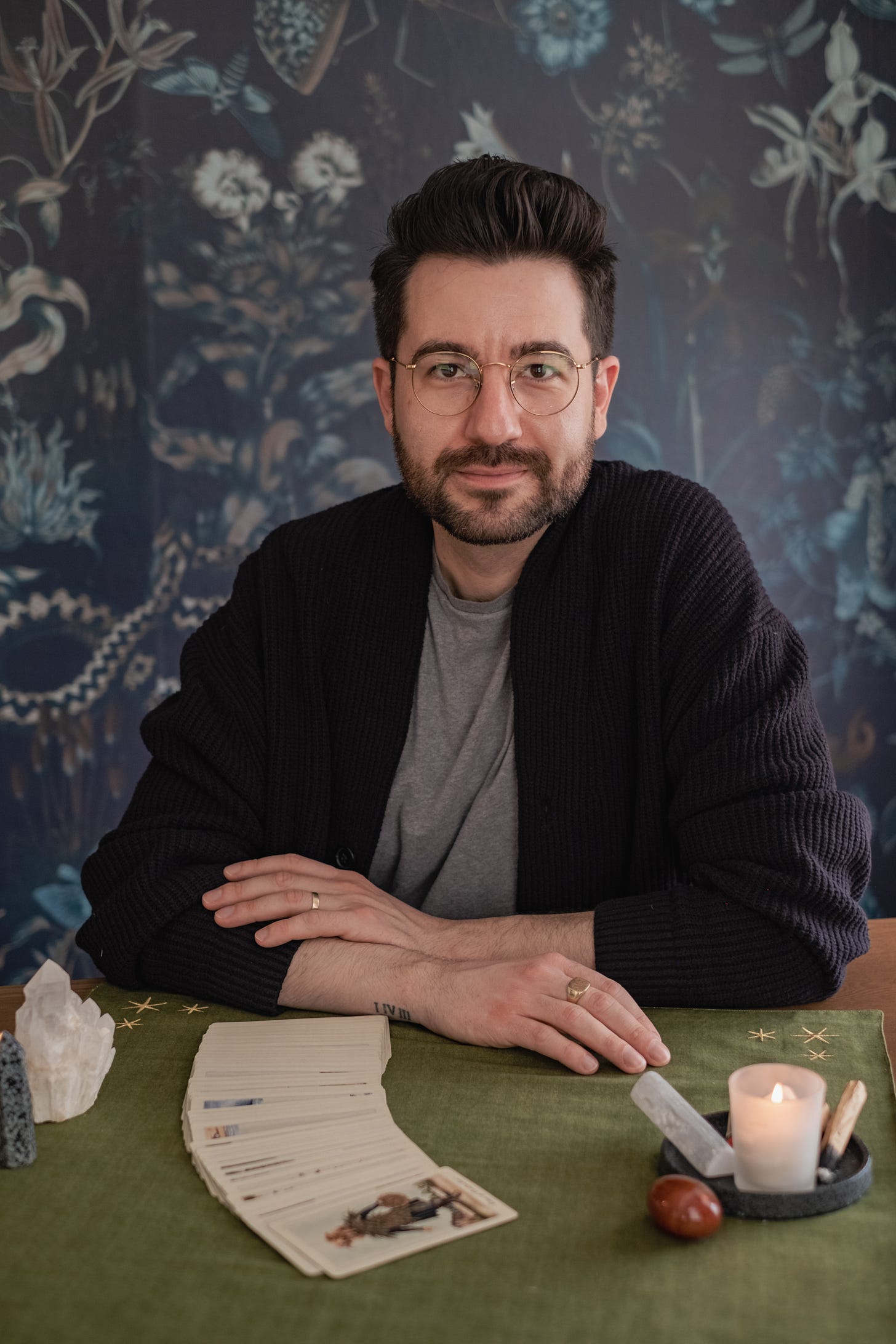
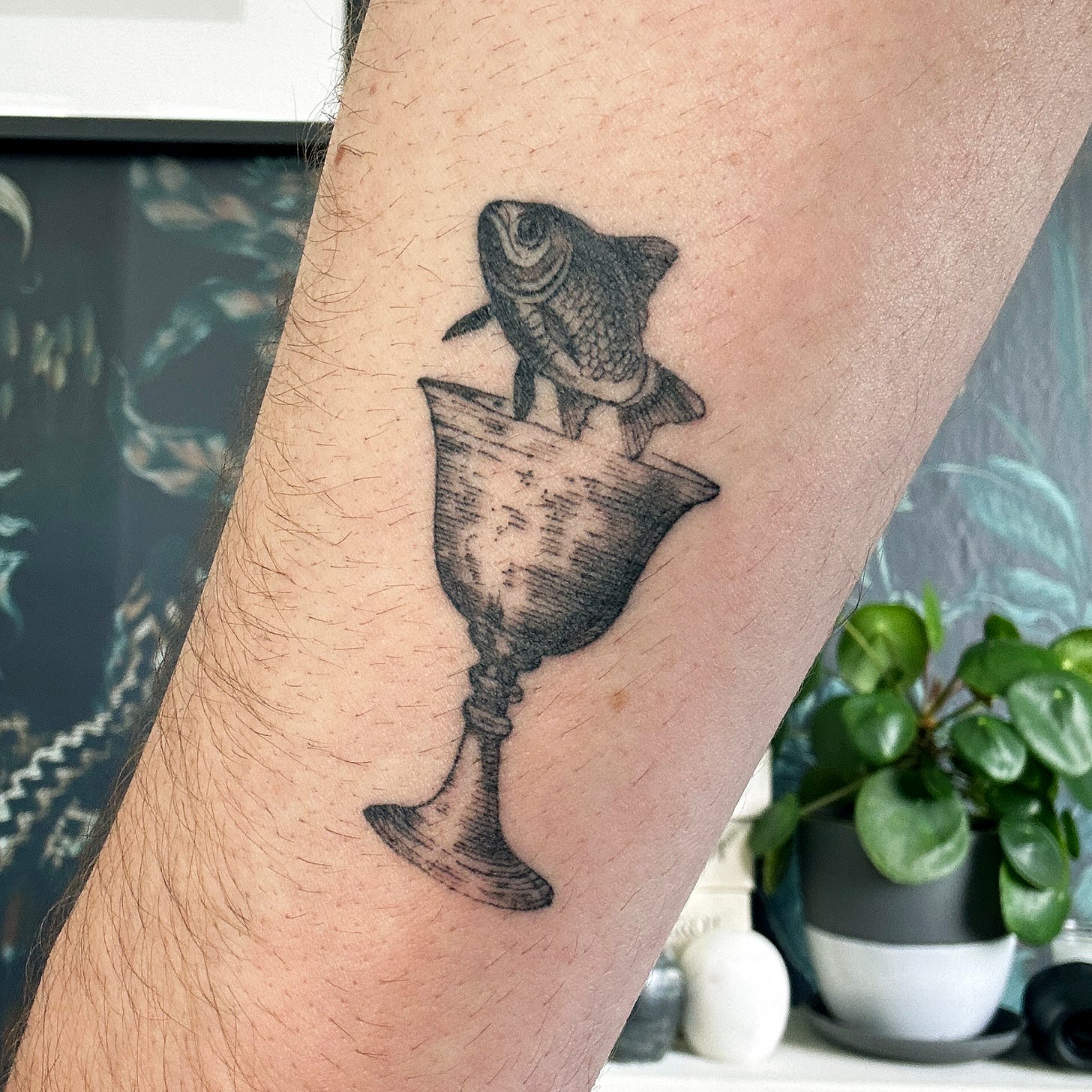



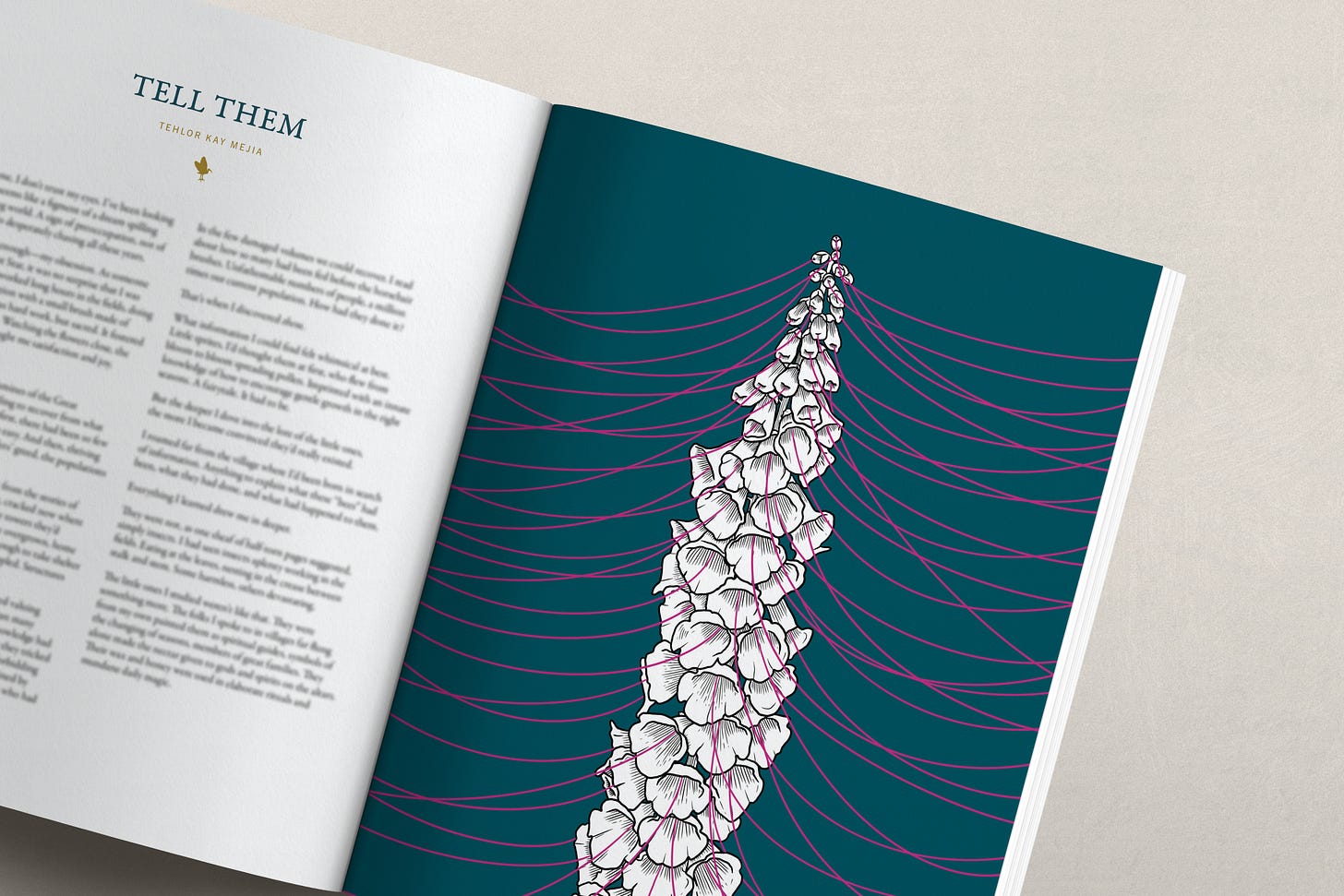
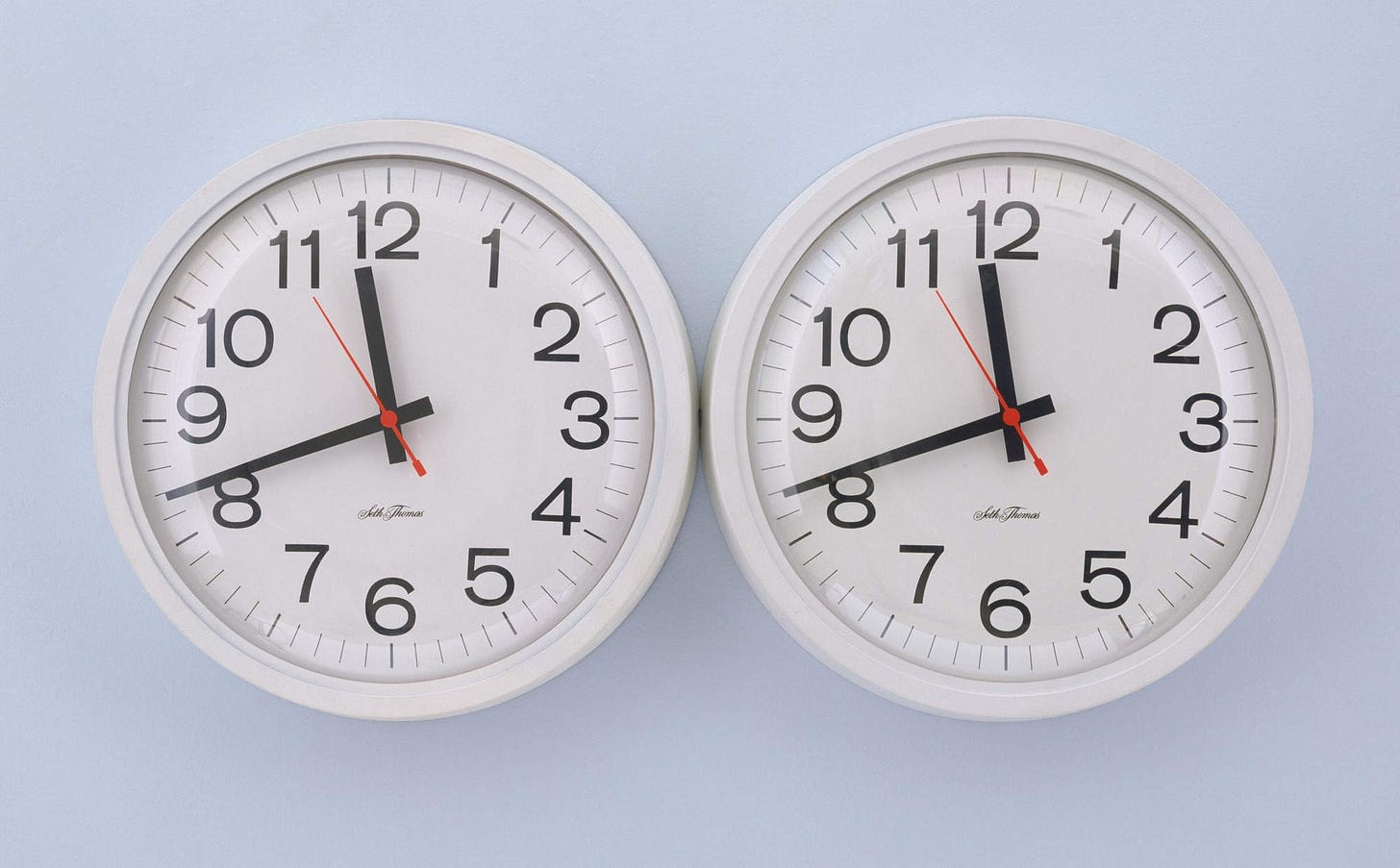
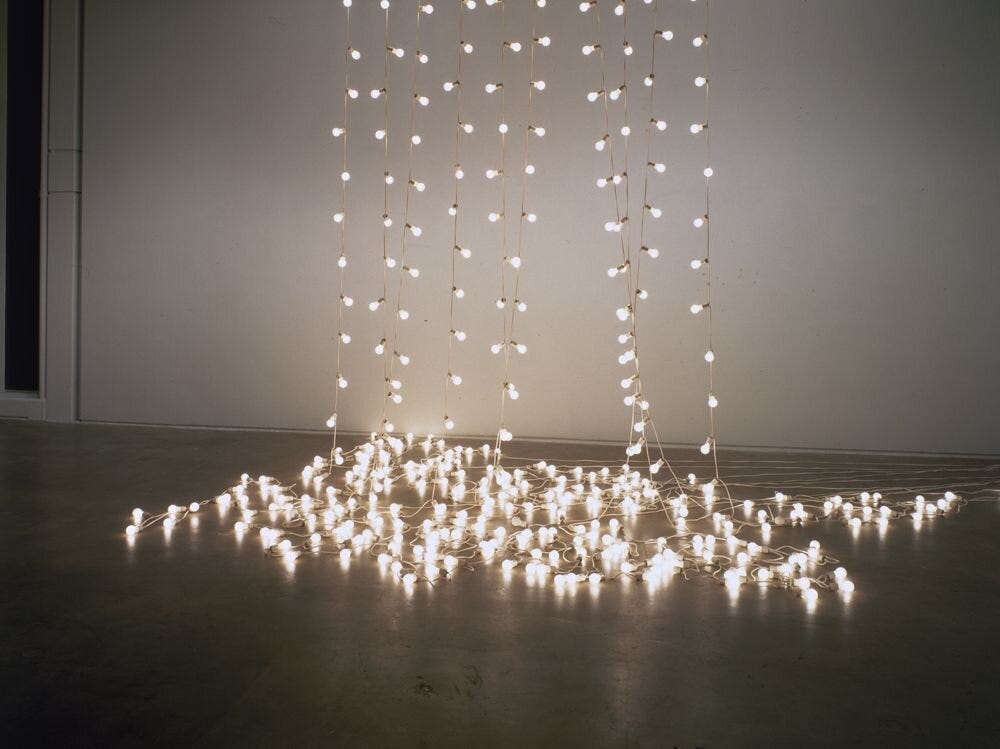
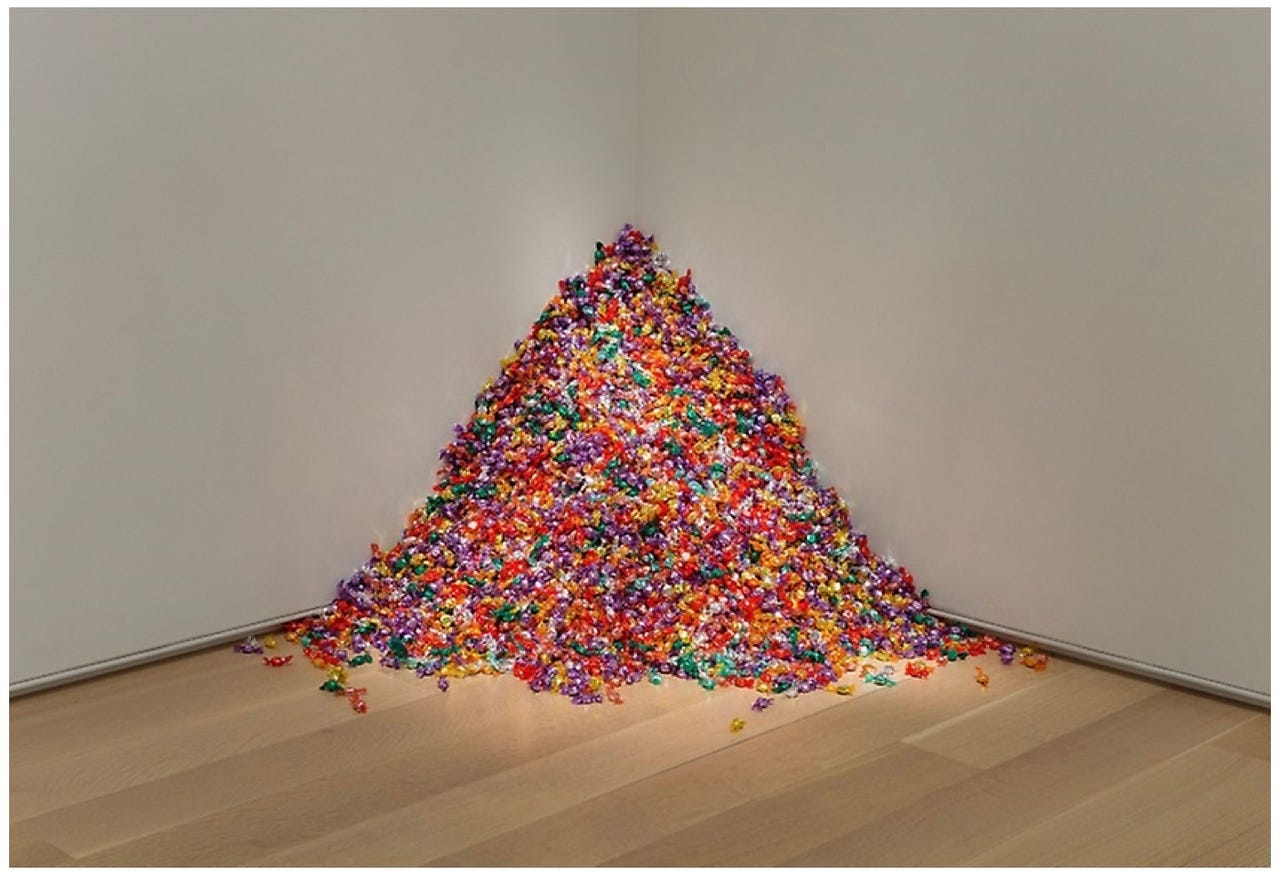
Loved this Hannah! And so excited for the Star to come into the world. Sending you so much love in this grieving time <3